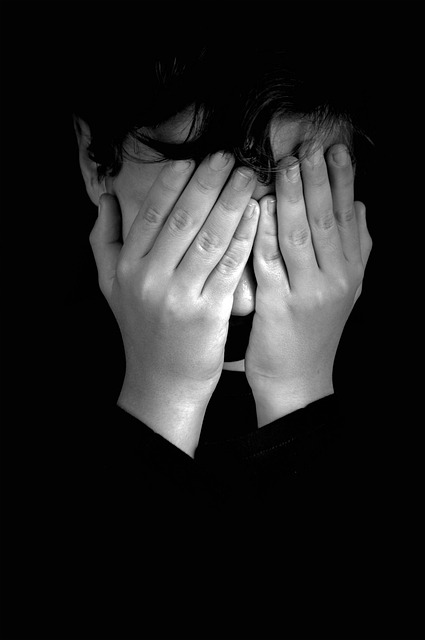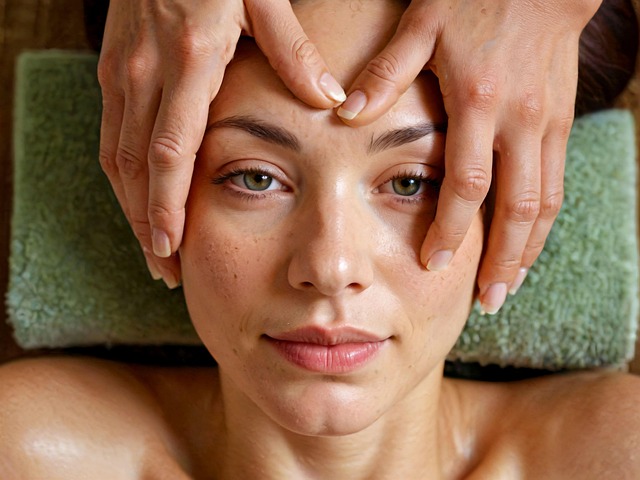Category: Adolescent Anxiety Therapy
Adolescent Anxiety Therapy: Navigating the Complexities of Youth Mental Health
Introduction
In the realm of mental health, adolescent anxiety stands as a prevalent and increasingly recognized challenge, impacting millions of young individuals worldwide. Adolescent Anxiety Therapy (AAT) emerges as a comprehensive approach to addressing this growing concern. This article aims to provide an in-depth exploration of AAT, delving into its various facets, global reach, and the transformative potential it holds for young minds. By the end of this journey, readers will grasp the intricate web of therapy, its impact, and the numerous factors that shape its practice.
Understanding Adolescent Anxiety Therapy: Unraveling the Core
Definition: Adolescent Anxiety Therapy is a specialized form of psychological intervention designed to identify, manage, and overcome anxiety disorders in adolescents—those aged between 13 and 19 years old. It involves a range of evidence-based techniques tailored to this specific age group, acknowledging the unique cognitive, social, and emotional developments during adolescence.
Core Components:
-
Assessment: The initial step involves a comprehensive evaluation by qualified mental health professionals to diagnose anxiety disorders and understand their underlying causes. This may include interviews, questionnaires, and standardized assessment tools.
-
Cognitive-Behavioral Therapy (CBT): CBT is a cornerstone of AAT, focusing on identifying and changing unhelpful thought patterns and behaviors contributing to anxiety. It equips adolescents with coping strategies and problem-solving skills.
-
Mindfulness and Relaxation Techniques: Teaching mindfulness practices, deep breathing exercises, and progressive muscle relaxation helps adolescents manage anxiety symptoms and promotes emotional regulation.
-
Exposure Therapy: Gradual exposure to feared situations or objects enables adolescents to confront and overcome their anxieties in a safe environment, reducing avoidance behaviors.
-
Family Involvement: AAT often involves collaboration with parents or caregivers, providing them with tools to support their adolescent’s therapy journey and fostering a nurturing home environment.
Historical Context: The field of adolescent psychology has witnessed a growing recognition of anxiety disorders in recent decades. In the 1980s, researchers began to focus specifically on childhood and adolescence, leading to the development of tailored therapeutic approaches. The past few years have seen a surge in interest, driven by increased awareness, improved diagnostic tools, and the rising prevalence of anxiety among young people globally.
Global Impact and Trends: A World-Wide Concern
Adolescent Anxiety Therapy is not confined to any region; it has gained international prominence due to the universal nature of youth anxiety. However, its impact and implementation vary across different countries and cultures:
| Region | Trends and Observations |
|---|---|
| North America | High prevalence rates, with studies indicating around 25% of adolescents experiencing an anxiety disorder. CBT is widely adopted, but there’s a growing emphasis on integrating technology for remote therapy. |
| Europe | The European Union has seen a rise in mental health awareness campaigns, leading to improved access to AAT. Cultural variations exist, with some countries offering more comprehensive national healthcare for youth mental health. |
| Asia-Pacific | This region presents unique challenges due to cultural taboos surrounding mental health. However, growing urban populations and increased access to technology are enabling more adolescents to seek therapy. |
| Middle East and Africa | Variability in resources and awareness. Some countries are investing in mental health infrastructure, while others face limited access to specialized services, including AAT. |
Economic Considerations: The Financial Landscape of Therapy
The economic implications of Adolescent Anxiety Therapy are multifaceted, impacting healthcare systems, families, and society at large:
-
Market Dynamics: The global mental health market is experiencing growth, with a specific focus on youth-oriented services. According to a 2021 report by Grand View Research, the global anxiety disorders treatment market size was valued at USD 7.6 billion in 2020 and is expected to grow at a CAGR of 8.3% from 2021 to 2028. AAT represents a significant segment within this market, with increasing demand driving innovation and investment.
-
Investment Patterns: Private healthcare providers and venture capital firms are showing interest in digital health solutions for adolescent anxiety. Telehealth and mobile apps offering AAT services have attracted substantial funding, revolutionizing access to care.
-
Economic Impact on Families: Out-of-pocket expenses for AAT can vary widely depending on location and treatment approach. While public healthcare systems offer some coverage, families often bear additional costs for specialized services, therapy, and medication.
-
Societal Benefits: Investing in AAT has far-reaching implications. Effective therapy can reduce the economic burden of anxiety disorders on society by minimizing absenteeism from school and work, decreasing healthcare costs associated with comorbid conditions, and promoting overall well-being.
Technological Advancements: Digital Transformations in Therapy
Technology has emerged as a powerful ally in Adolescent Anxiety Therapy, opening new avenues for access, delivery, and personalization:
-
Telehealth: Remote therapy sessions via video conferencing have become mainstream, especially during the COVID-19 pandemic. This technology overcomes geographical barriers, making therapy more accessible to rural or underserved populations.
-
Mobile Health (mHealth) Apps: Numerous apps offer guided cognitive-behavioral therapy, mindfulness exercises, and anxiety tracking tools tailored for adolescents. These apps provide discrete and convenient access to support between sessions. Examples include ‘Calm’ for meditation and ‘Woebot’ for CBT-based coaching.
-
Virtual Reality (VR) Therapy: VR is being explored for exposure therapy, allowing adolescents to confront fears in a safe, controlled virtual environment. This technology shows promise in treating phobias and social anxiety disorders.
-
Artificial Intelligence (AI): AI algorithms are being developed to personalize therapy by analyzing treatment data and providing adaptive interventions. Chatbots offering basic emotional support and guidance are also gaining popularity.
The Role of Schools: A Holistic Approach
Schools play a crucial role in identifying and supporting adolescents with anxiety disorders. Here’s how they contribute:
-
Early Intervention: School counselors and psychologists can screen for anxiety symptoms during routine check-ins or through standardized assessments. Early identification allows for timely intervention and referral to specialized services.
-
Incorporating AAT in Curricula: Some schools are integrating mindfulness and emotional intelligence programs into their curricula, empowering students with coping strategies from a young age.
-
Peer Support Programs: Peer mentoring and support groups can create a sense of belonging and reduce the stigma associated with seeking help for mental health issues.
Challenges and Ethical Considerations: Navigating Complexities
Despite its benefits, AAT faces several challenges and ethical dilemmas:
-
Stigma and Misunderstanding: Anxiety disorders often carry social stigma, deterring adolescents from seeking help. Mental health professionals must navigate these barriers and provide supportive environments for treatment.
-
Cultural Sensitivity: Cultural beliefs and expressions of anxiety can vary, requiring therapists to be culturally competent and adaptable in their approach.
-
Access to Services: Insufficient access to trained mental health professionals, especially in rural or low-resource areas, poses a significant challenge. Telehealth offers a solution but requires adequate infrastructure and technology literacy.
-
Informed Consent: Ensuring that adolescents understand the nature of therapy and its potential risks and benefits is essential, particularly when involving parents or guardians in the process.
Future Directions: Innovation and Research
The field of Adolescent Anxiety Therapy is constantly evolving, driven by ongoing research and technological advancements:
-
Personalized Medicine: The future may see more tailored therapy approaches based on individual genetic profiles, brain activity patterns, and response to previous treatments.
-
Neurotechnology: Advancements in neuroimaging and neuroscience could lead to a better understanding of anxiety disorders’ neural mechanisms, enabling more targeted interventions.
-
Integrative Approaches: Combining traditional AAT with alternative therapies like art therapy, music therapy, or animal-assisted therapy may offer novel ways to engage adolescents and enhance treatment outcomes.
Conclusion: Transforming Lives, One Step at a Time
Adolescent Anxiety Therapy is a dynamic field that continues to evolve, offering hope and healing to countless young lives. By combining evidence-based practices with technological innovations, therapists are empowering adolescents to navigate the challenges of anxiety and thrive in their personal journeys. As awareness and access to AAT grow, we move closer to a future where youth anxiety is understood, treated, and prevented on a global scale.
Empowering Adolescents: Coping Skills for Lasting Anxiety Relief

Adolescent anxiety therapy, focusing on cognitive-behavioral approaches and early intervention, empo…….
Navigating Anxiety Counseling for Teens: Medication & Lifestyle Support

Teen anxiety impacts daily life, necessitating early intervention through anxiety counseling for tee…….
Art and Music: Calming Teen Anxiety Through Creative Expression

Teen anxiety, affecting up to 30%, hinders daily life and mental well-being. Art and music therapies…….
Revolutionizing Adolescent Mental Health Care: Personalized Support for Anxiety

Personalized therapy for adolescents with anxiety leverages individual factors to enhance engagement…….
Group Therapy: Empowering Teens to Conquer Anxiety Together

Adolescent anxiety, fueled by academic pressure, social media, and peer dynamics, is addressed throu…….
Cognitive Behavioral Therapy: Easing Adolescent Anxiety at Home and School

Cognitive Behavioral Therapy (CBT) is a proven treatment for adolescent anxiety, targeting negative…….
Unraveling Adolescent Anxiety: Causes, Symptoms & Support Strategies

Adolescent anxiety arises from social pressure, media impact, academic stress, and life changes, lea…….
Exercise as Adolescent Mental Health Therapy: Stress Relief and Growth

Anxiety and stress are common teenage challenges, but early recognition and tailored mental health t…….
Family Support Key to Teen Anxiety Counseling Success

Adolescent anxiety, a complex condition affecting young minds, requires understanding its biological…….
